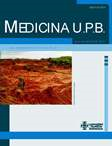Adherencia a las guías de higiene de manos en cuidado intensivo: el caso de una clínica privada
Contenido principal del artículo
Resumen
Objetivo: evaluar la adherencia a la guía de higiene de manos por parte del personal de salud en una clínica privada colombiana.
Metodología: se llevó a cabo un estudio de corte transversal descriptivo. Por medio de observación directa se recolectó información sobre la higiene de manos en el momento apropiado (oportunidad para higiene de manos). Adherencia se definió como higiene de manos de acuerdo con la guía para lavado de manos de la unidad. Los resultados se analizaron por medio de modelos de efectos mixtos con los funcionarios observados como efecto aleatorio.
Resultados: se observaron 180 oportunidades en 26 funcionarios de la unidad. La adherencia global fue de 18,9%. La adherencia varió de acuerdo con el tipo de funcionario, especialmente auxiliar de enfermería y terapeuta físico, y con el tiempo con respecto al contacto con el paciente. Los análisis multivariados mostraron una razón de momios (OR) protectora para no adherencia después de contacto con el paciente (OR, 0,23. IC 95% 0,15-0,33).
Conclusiones: la baja tasa de adherencia invita a desarrollar modelos de intervención especializados para una población especial de individuos que conoce de antemano los beneficios del lavado juicioso de manos.
Citas
Legido-Quigley H, McKee M, Nolte E, Glinos IA. Assuring the quality of health Care in the European Union: a case for action. Copenhagen, Denmark: European Observator y on Health Systems and Policies;2008.
Shortell SM, Zimmerman JE, Gillies RR, Duffy J, Devers KJ, Rousseau DM, et al. Continuously improving patient care: practical lessons and an assessment toolfrom the National ICU Study. QRB Qual Rev Bull. 1992 May;18(5):150-5.
Jasny BR, Bloom FE. It’s notrocket science butit can savelives. Science. 1985;280:1507.
Niederman MS. Impact of antibiotic resistance on clinical outcomes and the cost of care. Crit Care Med. 2001;29(Suppl 4):N114-20.
Shannon RP, Patel B, Cummins D, Shannon AH, Ganguli G, Lu Y. Economics of central line--associated bloods tream infections. Am J Med Qual. 2006 NovDec;21(6 Suppl):7S-16S.
Aragon D, Sole ML, Brown S. Outcomes of an infection prevention project focusing on hand hygiene and isolation practices. AACN Clin Issues. 2005 AprJun;16(2):121-32.
Boyce JM, Pittet D; Healthcare Infection Control Practices Advisory Committee;HICPAC/SHEA/APIC/ IDSA Hand Hygiene Task Force. Guideline for Hand Hygiene in Health-Care Settings. Recommendations of the Healthcare Infection Control Practices Advisory Committee and the HICPAC/SHEA/APIC/IDSA Hand Hygiene Task orce. Society for Healthcare Epidemiology of America/Association for Professionals in Infection Control/Infectious Diseases Society of America. MMWR Recomm Rep. 2002 Oct 25;51(RR-16):1-45, quiz CE1-4.
Larson EL, Early E, Cloonan P, Sugrue S, Parides M. Anorganizational climate intervention associated within creased hand washing and decreased nosocomial infections. Behav Med 2000;26:14-22.
Pittet D, Hugonnet S, Harbarth S, Mourouga P, Sauvan V, Touveneau S, et al. Effectiveness of a hospital-wide programme to improve compliance with hand hygiene. Infection Control Programme. Lancet. 2000;356:1307- 12.
World Health Organization. Guideline on hand hygiene in health care. Geneva, Switzerland: World Health Organization; 2009.
Chou DT, Achan P, Ramachandran M. The World Health Organization ‘5 moments of hand hygiene’: the scientific foundation. J Bone Joint Surg Br. 2012 Apr;94(4):441-5.
Berg DE, Hershow RC, Ramirez CA. Control of nosocomial infections in an intensive care unit in Guatemala City. Clin Infect Dis. 1995;21:588-93.
Pittet D, Simon A, Hugonnet S, Pessoa-Silva CL, Sauvan V, Perneger TV. Hand hygiene among physicians: performance, beliefs, and perceptions. Ann Intern Med. 2004;141:1-8.
Dubbert PM, Dolce J, Richter W, Miller M, Chapman SW. Increasing ICU staff hand washing: effects of education and group feedback. Infect Control Hosp Epidemiol. 1990;11:191-3.
Fridkin SK, Pear SM, Williamson TH, Galgiani JN, Jarvis WR. The role of understaffing in central venous catheter-associated bloodstream infections. Infect Control Hosp Epidemiol. 1996;17:150-8.
Salazar-Maya AM, Guarín GE, Arroyave ML, Ochoa JR, Galeano M. La higiene de manos en una unidad de cuidado intensivo. Aquichan. 2008;8:8-18.
Amazian K, Abdelmoumène T, Sekkat S, Terzaki S, Njah M, Dhidah L, et al. Multicentre study on hand hygiene facilities and practice in the Mediterranean area: results from he NosoMed Network. J Hosp Infect. 2006 Mar;62(3):311-8.
Saba R, Inan D, Seyman D, Gul G, Senol YY, Turhan O, et al. Hand hygiene compliance in a hematology unit. Acta Haematol. 2005;113:190-3.
Pittet D, Mourouga P, Perneger TV. Compliance with hand washing in a teaching hospital. Infection Control Program. Ann Intern Med. 1999;130:126-30.
Douce M. Adherencia a la higiene de manos en la unidad de terapia intensiva del Hospital Vozandes Quito. Rev Med Vozandes. 2012;23 (1):35-39.
Thompson BL, Dwyer DM, Ussery XT, Denman S, Vacek P, Schwartz B. Hand washing and glove use in a long-term-care facility. Infect Control Hosp Epidemiol. 1997;18:97-103.
Girard R, Amazian K, Fabry J. Better compliance and better tolerance in relation to a well-conducted introduction torub-in hand disinfection. J Hosp Infect. 2001;47:131-7.


